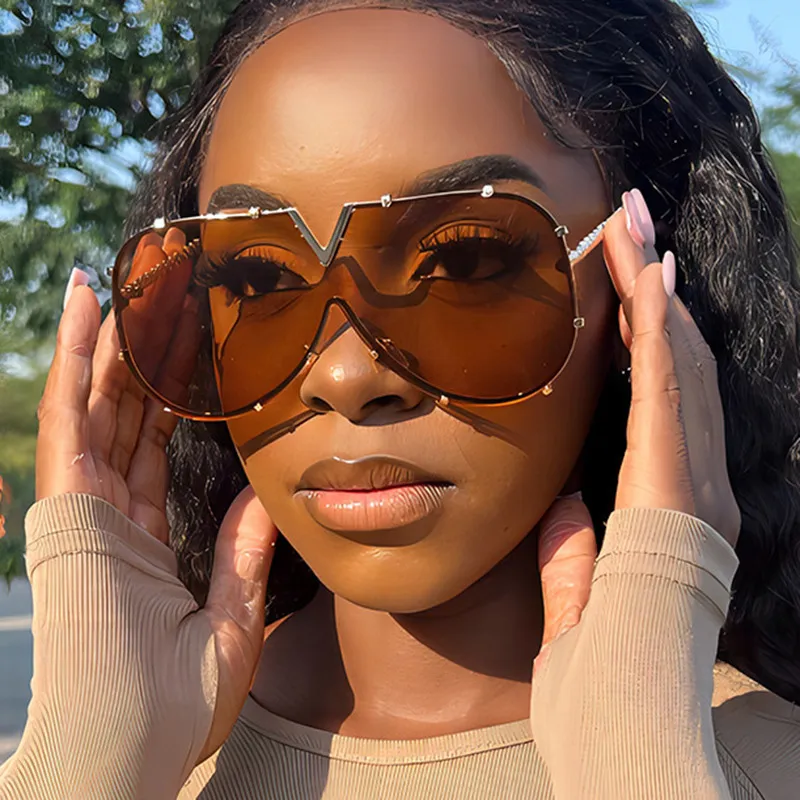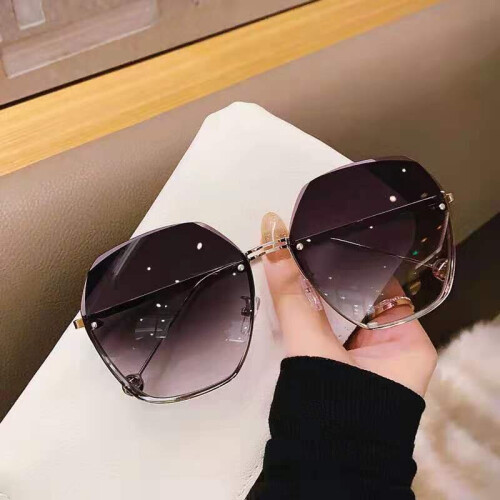What to Think About in Getting Sunglasses: A Thorough Acquiring Guide
Choosing the appropriate sunglasses involves greater than simply choosing an elegant pair. Secret factors include UV protection, lens types, and framework materials. Best Sunglasses for women. Convenience and fit are likewise crucial for daily wear. Understanding lens shades and polarization can boost aesthetic clearness. Additionally, brand name track record and guarantee choices play a considerable role in making certain a wise investment. Each aspect calls for cautious factor to consider to protect one's eyes efficiently. What should one prioritize first?
Recognizing UV Protection and Lens Kind
When selecting sunglasses, understanding UV security and lens types is necessary for guaranteeing eye security and convenience. Ultraviolet (UV) rays from the sun can cause considerable damages to the eyes, resulting in problems such as cataracts and macular degeneration. Efficient sunglasses should block 100% of UVA and UVB rays, offering crucial protection.Lens types additionally play an important duty in the capability of sunglasses. Polarized lenses reduce glare from reflective surfaces, making them ideal for tasks like driving or water sports. Slope lenses, which are darker at the top and lighter near the bottom, are suitable for general usage and outside tasks. Additionally, photochromic lenses readjust their color based on light conditions, using convenience. Ultimately, focusing on UV security along with the appropriate lens type boosts both safety and visual quality, enabling individuals to delight in outside activities without compromising eye health.
Frame Designs and Materials
Choosing the right structure style and product is equally as important as recognizing UV defense and lens types. Different framework designs can greatly influence both appearances and capability. Usual designs include pilots, wayfarers, and cat-eye, each dealing with unique preferences and face shapes.Materials made use of in sunglasses frames vary widely, affecting sturdiness, weight, and comfort. Plastic frames, usually light-weight and cost effective, appropriate for laid-back wear. Metal frames, while usually even more durable, can be heavier however provide a classic look. Furthermore, there are green options made from lasting materials, attracting ecologically conscious consumers.The option of frame product can also affect the total fit and feel of the sunglasses. For those that prioritize fashion or performance, understanding the subtleties of framework styles and materials ensures an enlightened purchase that straightens with individual design and way of living demands.
Convenience and Fit Considerations
When picking sunglasses, the form of the frame plays a vital role in accomplishing a comfortable fit. A proper nose bridge fit is important, as it aids prevent sliding and discomfort throughout wear. Understanding these elements can greatly improve the overall experience with sunglasses.
Frame Forming Relevance
The form of sunglasses structures plays a necessary function in identifying general convenience and fit. Numerous framework forms, such as round, square, and pilot, deal with different face frameworks, influencing just how well the sunglasses sit on the face. A well-matched frame shape can boost stability and decrease stress points, making prolonged wear extra pleasurable. Rounded frames might soften angular functions, while square structures can add meaning to softer face contours. Furthermore, the framework's width should line up with the user's face, guaranteeing optimal support. Ultimately, picking the right frame shape is important for stabilizing style with comfort, as the wrong option can bring about pain, slippage, or constant adjustments throughout the day.

Nose Bridge Fit
Often ignored, the fit of the nose bridge is vital for making certain comfort and stability in sunglasses. An appropriate nose bridge fit can avoid moving, pinching, or discomfort during extended wear. Sunglasses normally feature various nose bridge sizes-- narrow, medium, and wide-- to fit varying face structures. People with greater or lower nose bridges might require details styles to achieve perfect fit. Adjustable nose pads can additionally boost personalization, enabling wearers to customize the suitable for individual convenience. It is vital for customers to try out sunglasses to analyze how they hinge on the nose without creating irritation. Ultimately, the best nose bridge fit adds considerably to the general performance and pleasure of putting on sunglasses.
Lens Shade and Tints
Lens color and tints play an essential role in improving visual comfort and protection from damaging UV rays. Different tones can impact perception and contrast, making it important to select appropriate alternatives based upon details tasks and environments. Recognizing the impacts of different colors can aid consumers pick sunglasses that finest match their demands.
Various Lens Color Styles
What elements should one think about when selecting lens shades for sunglasses? Various lens shades serve various purposes and can improve aesthetic convenience. Get More Info Grey lenses reduce illumination without distorting shades, making them optimal for general usage. Brownish and amber lenses enhance comparison, boosting deepness assumption, which is valuable for exterior activities. Yellow lenses work in low-light conditions, offering clearness and enhanced presence. Environment-friendly lenses reduce glow while protecting shade equilibrium, suitable for sporting activities and outdoor enthusiasts. Furthermore, mirrored finishes can additionally minimize glow and enhance style. Personal choice additionally plays an important function, as people may pick colors based on visual allure or certain tasks. Understanding these factors aids in picking the most appropriate lens color for one's requirements.
Effects of Tints

Selecting Appropriate Shades
Just how can one determine the best lens shade and tint for their her comment is here details demands? Numerous lens colors and colors offer different purposes, influencing visual comfort and clarity. Gray lenses are effective for decreasing total illumination while preserving natural shade balance, making them excellent for day-to-day usage. Brown and brownish-yellow colors enhance contrast and depth perception, suitable for exterior tasks like treking or angling. Yellow lenses increase exposure in low-light problems, beneficial for cloudy days. Polarized lenses, no matter shade, minimize glare from reflective surface areas, improving safety and security and comfort. It is crucial to consider personal activities and environmental conditions when picking lens shades, guaranteeing peak efficiency and security from harmful UV rays. Customizing selections to specific demands boosts the total experience with sunglasses.
Polarization and Glare Decrease
Why is polarization essential in sunglasses? Polarization plays an essential role in improving aesthetic comfort and clearness. Sunglasses with polarized lenses are made to filter out horizontal light waves, which are mainly liable for glare. This capacity substantially decreases reflections from surface areas such as water, roads, and snow, making them specifically useful for tasks like driving, fishing, or skiing.Glare can create eye strain and pain, hindering vision and potentially leading to accidents. Polarized lenses boost comparison and color understanding, permitting for a more clear sight of the surroundings.When considering sunglasses, people must look for polarized alternatives to boost their outdoor experience. While these lenses offer distinctive advantages, it is essential to confirm that the sunglasses additionally give ample UV security. Together, polarization and UV security create a detailed service for maintaining eye health and overall visual convenience in intense conditions.
Brand Online Reputation and Service Warranty Options
Although numerous variables add to the option of sunglasses, brand name reputation and warranty options significantly affect customer options. Brand names with a solid track record frequently indicate top quality and reliability, as see post they are commonly established and relied on by customers with time. Customers often incline acknowledged names that guarantee sturdiness, style, and defense from unsafe UV rays.Additionally, service warranty choices play a vital function in the acquiring choice. A thorough guarantee can offer reassurance, covering flaws and supplying repairs or replacements. This secure urges confidence in the product's long life and performance. Customers must assess the size and regards to the guarantee, along with the brand's customer support online reputation, to guarantee they are making a notified choice. Ultimately, the mix of brand name reputation and service warranty alternatives can significantly impact the perceived value and contentment stemmed from a set of sunglasses.
Regularly Asked Concerns
Just how Do I Clean and Preserve My Sunglasses Effectively?

Can I Use Prescription Glasses With Sunglasses?
Wearing prescription glasses with sunglasses is feasible with various choices, consisting of clip-ons or prescription sunglasses. This mix guarantees clear vision and defense from UV rays, enabling individuals to appreciate outside tasks easily and stylishly.
Are Expensive Sunglasses Worth the Financial Investment?
The worth of costly sunglasses frequently hinges on exceptional products, better UV security, and improved toughness. For some individuals, this investment guarantees long-lasting eye health and design, making it worthwhile regardless of the higher initial expense.
What Is the Suitable Lens Width for My Face?
Determining the ideal lens size entails gauging face functions. Typically, larger lenses match wider faces, while narrower lenses complement slimmer profiles. Designer Sunglasses For women. Personal convenience and style preferences eventually assist the choice for ideal fit and look
Exactly how Typically Should I Change My Sunglasses?
The frequency of sunglasses replacement relies on use and wear. Usually, individuals ought to consider changing them every one to two years, especially if lenses are damaged, structures are harmed, or UV protection diminishes in time.